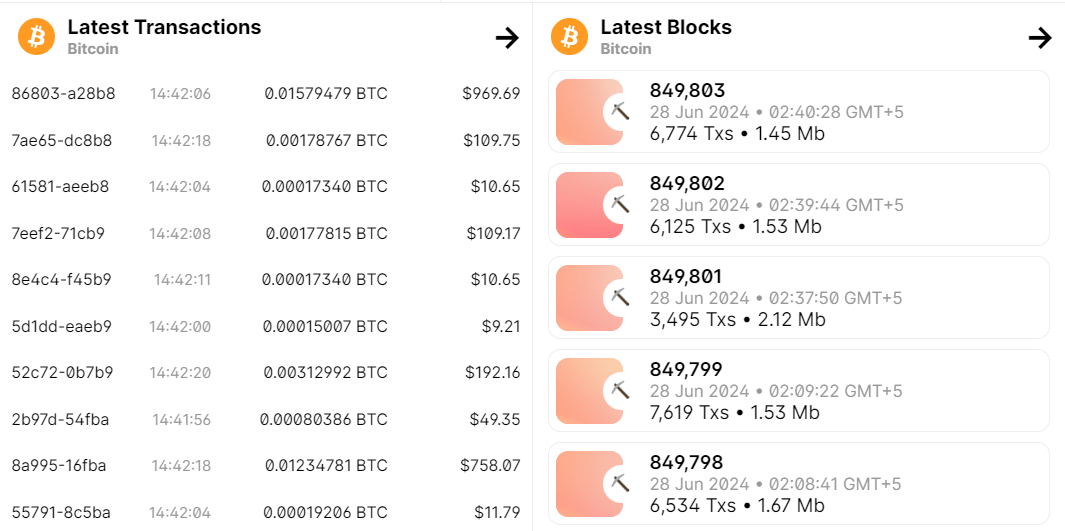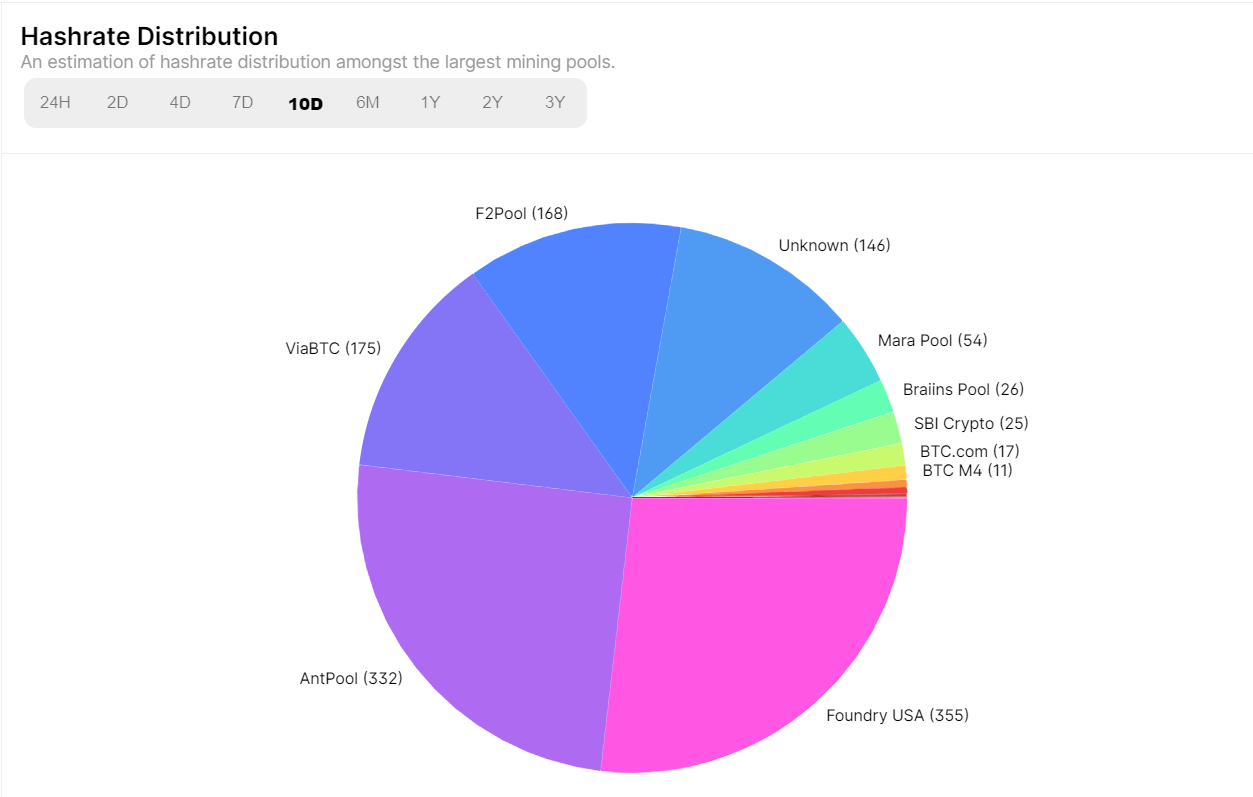Did you ever hear the word of Blockchain Explorer? Let's understand it but first learn the scenario! Imagine you're in a bustling market where everyone can trade goods without needing a central authority like a bank to oversee the transactions. Instead, a public ledger keeps a record of all transactions, ensuring transparency and trust among traders. This is the essence of Bitcoin and its underlying technology, the blockchain. Let's embark on a journey to understand key concepts like the Bitcoin blockchain explorer, public and private keys, miners, mining pools, and the genesis block.
The Bitcoin Blockchain Explorer: Your Window into the Bitcoin World
The Bitcoin blockchain explorer is like a powerful search engine for the Bitcoin network. It allows users to view every transaction ever made, the balances of Bitcoin addresses, and more. Think of it as a high-tech library catalog, where you can look up the details of any book (or transaction) ever recorded.
Using a blockchain explorer, you can:
- Track Transactions: See if your Bitcoin transaction has been confirmed.
- Check Balances: View the balance of any Bitcoin address.
- Explore Blocks: Look at details of individual blocks in the blockchain.
This transparency is one of the core strengths of Bitcoin, allowing anyone to verify transactions and track the flow of bitcoins through the network.
Public and Private Keys: The Foundations of Bitcoin Security
In the Bitcoin network, security is paramount, and it hinges on the concepts of public and private keys.
Public Key (Address)
A public key is like your email address. You can share it with others so they can send you Bitcoin. When you create a Bitcoin wallet, it generates a public key, which is then hashed to produce a Bitcoin address. This address is what you give to others to receive Bitcoin.
Private Key
A private key is like the password to your email account. It allows you to access your Bitcoin and authorize transactions. Your private key should be kept secret and secure. If someone gains access to your private key, they can control your bitcoins.
Imagine a mailbox. The public key is the address where people send mail (Bitcoin), and the private key is the key to open the mailbox and retrieve the mail. Both are essential for the secure operation of your Bitcoin wallet.
Miners and Mining Pools: The Backbone of the Bitcoin Network
Bitcoin mining is the process by which new bitcoins are created and transactions are verified and added to the blockchain. This process is carried out by miners, who use powerful computers to solve complex mathematical problems. When a miner solves a problem, they add a new block to the blockchain and are rewarded with newly minted bitcoins.
Mining Pools
Mining alone can be incredibly challenging due to the high computational power required. This is where mining pools come into play. A mining pool is a group of miners who combine their computational resources to increase their chances of solving a block. When a block is successfully mined, the reward is distributed among the pool members based on their contributed computing power.
Think of it like a lottery pool. Individually, your chances of winning are slim, but by pooling resources with others, you increase your chances of getting a share of the prize. Note that this is not a real lottery but every rig of this mining pool works.
The Genesis Block: The Birth of Bitcoin
The genesis block, also known as Block 0 or Block 1, is the first block ever mined on the Bitcoin blockchain. It was created by Bitcoin's mysterious founder, Satoshi Nakamoto, on January 3, 2009.
Significance of the Genesis Block
- Historical Value: The genesis block marks the inception of the Bitcoin blockchain and the beginning of decentralized digital currency.
- Hardcoded: Unlike other blocks that reference a previous block, the genesis block has no predecessor and is hardcoded into the Bitcoin software.
- Unspendable Reward: The 50 bitcoins rewarded for mining the genesis block are unspendable, which adds to the block's mystique.
The Hidden Message
Embedded within the genesis block is a cryptic message: "The Times 03/Jan/2009 Chancellor on brink of second bailout for banks." This headline from The Times newspaper likely serves as a timestamp, proving the block wasn't created before this date. It also hints at the motivation behind Bitcoin's creation—a response to the financial instability and reliance on banks highlighted during the 2008 financial crisis.
The Six-Day Gap Mystery
Interestingly, there is a six-day gap between the mining of the genesis block and the second block (Block 1). The reason for this delay remains unknown, but some speculate it might have been symbolic, possibly referencing the biblical account of creation taking six days. We have the opinion that this time was due to any error which Nakamoto resolved during this period.
A Comprehensive Look at Bitcoin Transactions
Bitcoin transactions are the lifeblood of the blockchain. When you send Bitcoin, you're creating a transaction that is broadcast to the network and included in a block by miners.
Components of a Bitcoin Transaction
- Inputs: The source(s) of the Bitcoin being spent.
- Outputs: The destination(s) where the Bitcoin is being sent.
- Transaction Fee: A small fee paid to miners for including the transaction in a block.
The Role of Miners
Miners validate transactions by including them in new blocks. They check that the inputs of each transaction are valid and that the sender has enough Bitcoin to cover the transaction. This process involves solving cryptographic puzzles, which require significant computational power. Here e must note two things:
- If there is no transaction available then an empty block can be mined too, because every block has a UTXO (new transaction) which gives miners their reward of mining.
- Verification of a transaction does not require any computational power. It is the 10 min gap between two blocks which needs hashing and thus uses power.
The Journey of a Bitcoin Transaction
Let's follow the journey of a Bitcoin transaction from sender to recipient:
- Creation: You decide to send Bitcoin to a friend. Your wallet software creates a transaction with the necessary inputs, outputs, and a transaction fee.
- Broadcast: The transaction is broadcast to the Bitcoin network, where it awaits inclusion in a block.
- Validation: Miners pick up the transaction and validate it by solving a cryptographic puzzle. Once solved, the transaction is included in a new block.
- Confirmation: The block containing your transaction is added to the blockchain. Your transaction is now confirmed, and your friend receives the Bitcoin.
The Importance of Decentralization
One of Bitcoin's key features is its decentralization. Unlike traditional currencies controlled by central banks, Bitcoin operates on a peer-to-peer network of nodes (computers) that collectively maintain the blockchain.
Benefits of Decentralization
- Security: With no central point of control, the network is resilient against attacks.
- Transparency: All transactions are publicly visible on the blockchain, promoting trust.
- Censorship Resistance: No single entity can censor transactions or control the network.
Understanding Blockchain Technology
At its core, blockchain technology is a decentralized digital ledger. Each block in the blockchain contains a list of transactions, a timestamp, and a reference to the previous block's hash. This chaining of blocks ensures the integrity and immutability of the blockchain.
How Blockchain Ensures Security
- Cryptographic Hashing: Each block's reference to the previous block's hash creates a secure chain. Changing any part of a block would alter its hash, breaking the chain and making tampering evident.
- Proof of Work: Miners must solve complex mathematical puzzles to add a block, which requires significant computational effort. This makes it infeasible for any single entity to control the blockchain.
Bitcoin's Impact and Future
Bitcoin has revolutionized the way we think about money and transactions. It has introduced the concept of decentralized digital currency and inspired the development of thousands of other cryptocurrencies.
Real-World Applications
- Remittances: Bitcoin provides a cost-effective way to send money across borders.
- Investment: Many view Bitcoin as a digital gold, a store of value.
- Smart Contracts: Bitcoin's underlying technology (blockchain) has paved the way for smart contracts—self-executing contracts with the terms directly written into code. These contracts are used in Ethereum and others.
Challenges and Considerations
- Scalability: Bitcoin's network can process a limited number of transactions per second, leading to delays during peak times.
- Regulation: Governments around the world are grappling with how to regulate Bitcoin and other cryptocurrencies.
- Environmental Impact: Bitcoin mining consumes significant energy, raising concerns about its environmental footprint.
Conclusion
The world of Bitcoin is vast and intriguing, filled with complex concepts and innovative technology. From the transparency provided by the Bitcoin blockchain explorer to the security ensured by public and private keys, and from the diligent work of miners to the historical significance of the genesis block, Bitcoin represents a groundbreaking shift in how we understand and use money.
As you continue your journey into the world of Bitcoin, remember that this decentralized digital currency is more than just a financial instrument. It's a testament to the power of technology to create a new, open, and transparent financial system. Whether you're a curious beginner or an aspiring expert, the story of Bitcoin is one worth exploring.
Key Takeaways
- Bitcoin Blockchain Explorer: This tool allows users to view all Bitcoin transactions, check balances of addresses, and explore individual blocks. It's a transparent ledger that enhances trust and verifiability.
- Public and Private Keys: A public key (Bitcoin address) is like an email address used to receive Bitcoin, while a private key is like the password that allows you to access and manage your Bitcoin.
- Miners and Mining Pools: Miners use computational power to solve cryptographic puzzles, validating transactions and creating new bitcoins. Mining pools are groups of miners combining resources to increase their chances of mining a block.
- Genesis Block: The first block of the Bitcoin blockchain, created by Satoshi Nakamoto on January 3, 2009. It contains a hidden message referencing a newspaper headline, symbolizing a response to the 2008 financial crisis.
- Bitcoin Transactions: Transactions involve inputs (source of Bitcoin), outputs (destination), and a transaction fee. They are broadcasted, validated by miners, and confirmed once included in a block.
- Decentralization: Bitcoin operates on a decentralized network of nodes, ensuring security, transparency, and resistance to censorship.
- Blockchain Technology: A decentralized digital ledger where each block contains a list of transactions and a reference to the previous block’s hash, ensuring security and immutability.
- Bitcoin's Impact and Future: Bitcoin has revolutionized finance by introducing decentralized digital currency. It faces challenges like scalability, regulation, and environmental impact but has significant real-world applications in remittances, investment, and smart contracts.
These key points offer a foundational understanding of Bitcoin and its core components, highlighting its innovative approach to digital currency and decentralized finance.

